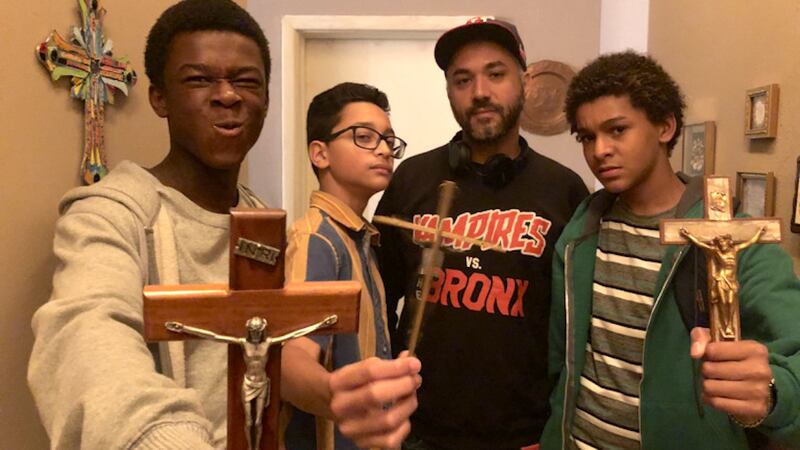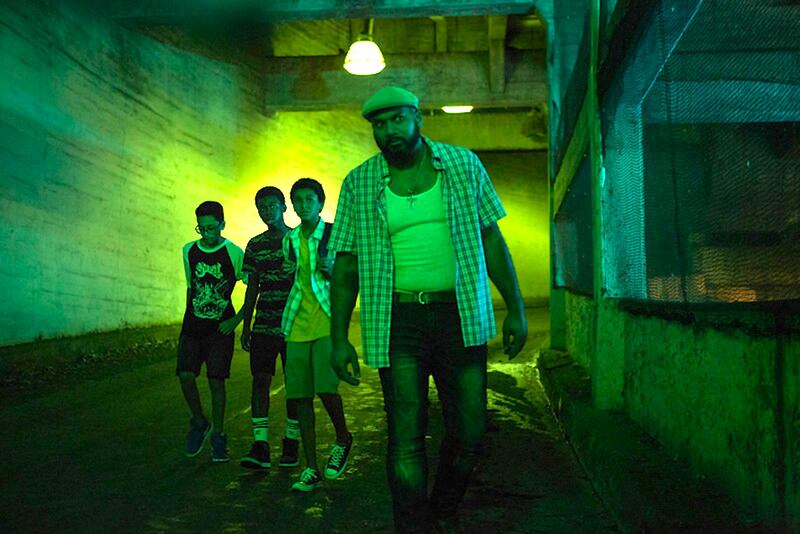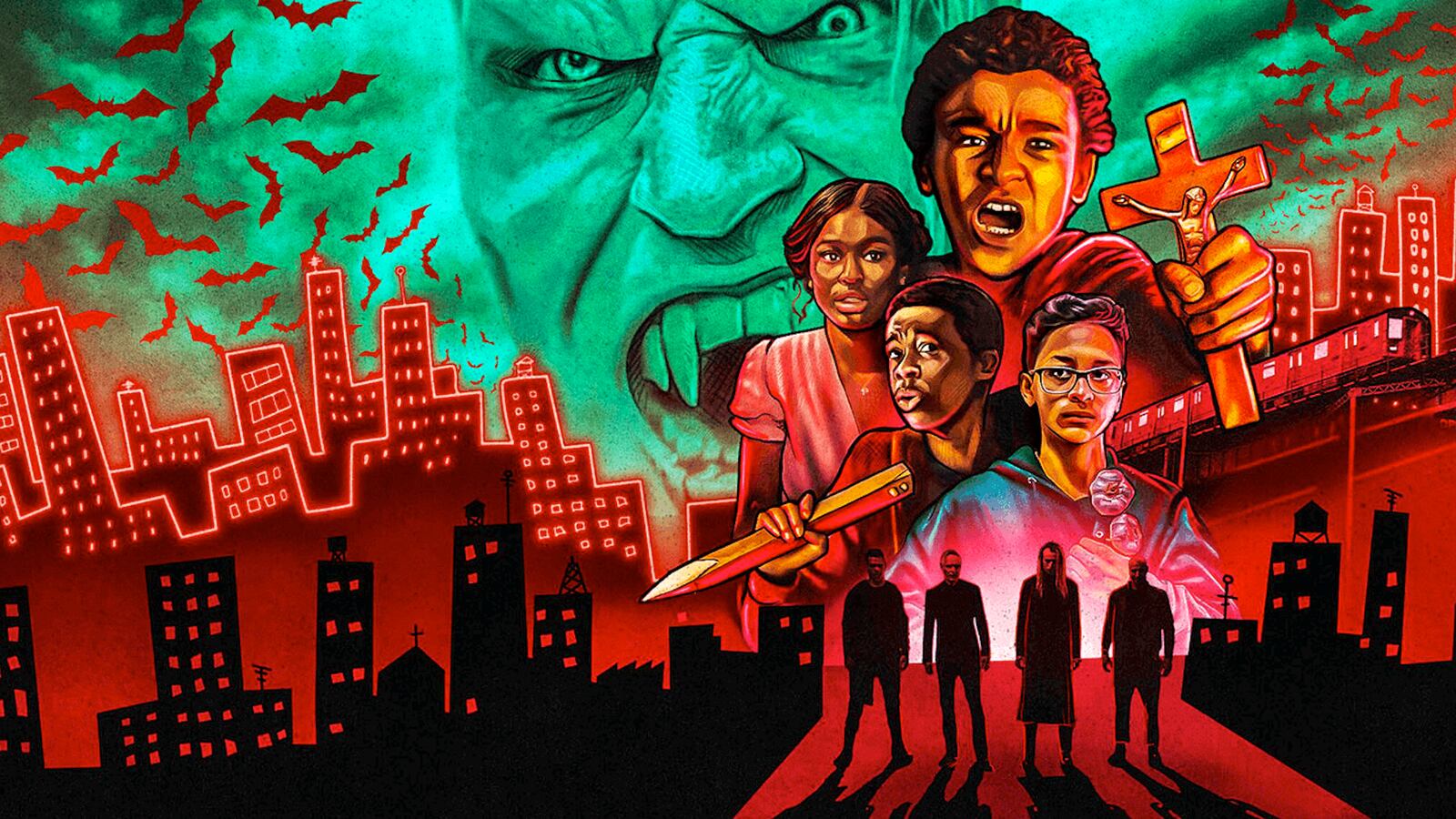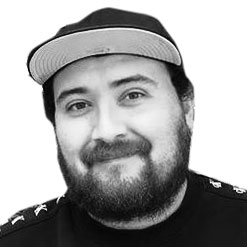In December 2016, a month after the fateful U.S. election, New York-based Dominican director Oz Rodriguez was understandably ridden with unease about the future of his adoptive country. His best friend and creative partner Matt Villines, with whom he’d formed the Matt & Oz comedy-directing duo, had passed away just a few moths prior. “I was at a crossroads in my professional life,” he tells The Daily Beast.
Soon, that emotional cocktail of loss and uncertainty coalesced into an impetus to challenge himself. He had a desire to finally create work that represented him on a personal level: “I wanted to tell a story that reflected me, my friends, my people, and my culture with diversity on screen.” From that thorny soul-searching moment bloomed the seed for the recently released horror comedy Vampires vs. the Bronx. The movie follows three boys fighting off a pack of blood-sucking creatures trying to take over their borough.
Speaking to people in Washington Heights, where a large population of Dominican-Americans reside, Rodriguez heard countless accounts about the neighborhood losing its identity to gentrification. “From doing that research, I ended up in the Bronx, another place with a lot of Dominicans, which felt almost like the last frontier,” he says. There’s still a sense of community in the Bronx, but the early signs of displacement, of what’s to come, have begun to emerge in the form of trendy coffee shops and high-end retailers.
“They’re sucking the life away from the neighborhood,” the locals repeatedly told Rodriguez, who was immediately clued to vampires. But while legitimate comparisons to the 2011 British film Attack the Block will abound, the filmmaker points to 1980s Amblin Entertainment productions as his most direct inspiration. “My goal was to make a movie like the ones I saw growing up, The Goonies and The Lost Boys, about kids who go on an adventure and chase impossible odds,” he explains.
His other objective was to address some of those issues facing economically disadvantaged Black and brown people. Neglect, manifested partly in the lack of access to quality services, and prejudice from those in power have rendered many areas susceptible to predatory practices. The vampires in the film believe they can dispose of people from the Bronx because, in their terrifying eyes, no one will miss them.
But they are dead wrong.
As Rodriguez notes, there’s a great sense of pride among those who call the Bronx home. Outsiders might dismiss them, but they’ve got each other’s backs. Determined to portray the Bronx realistically, yet in a positive light, the director refused to dwell on any negative aspects. Those stories have been told ad nauseam, he believes, and are sometimes the only ones coming out of these places. “I wanted to flip that on its head and make people heroes to showcase how this community has life and vibrancy,” he adds.
Though he admits that his allegory—using vampires as a gentrifying force—isn’t exactly subtle, the genre combination provided a space where the approach was valid. “With horror and comedy you’re able to discuss themes in a way that doesn’t seem preachy because you’re using metaphors,” says Rodriguez. “I never wanted to have a moment where the movie stops for the kid to deliver an anti-gentrification speech. I never wanted the kids to even say the word gentrification.”
Rodriguez had been working at Saturday Night Live as a segment director for several years when he started working on Vampires vs. the Bronx, his debut feature. “SNL changed my whole life,” he notes. Despite the show’s reputation as a difficult environment where people easily lose their jobs, he found his feet there. He describes the experience as attending “comedy Hogwarts” where his instructors were seasoned writers, famous actors, and A-list hosts. “I spent over seven years there and learned so much about how to treat comedy intelligently,” he offers.
The near-impossible demands of such a high-profile position doing live television prepared him to be in charge of a larger set. It also led him to get his movie produced. Around the time Rodriguez set out to get it made, SNL’s mastermind Lorne Michaels was looking to produce low-budget movies. Rodriguez pitched him the idea with a short logline and Michaels quickly got things moving. “I was extremely lucky to have him being into that idea and help me produce it. He made it happen basically. Just like that,” says Rodriguez.
That top-shelf support afforded Rodriguez enough resources to conceive the movie as he had envisioned it. Part of that was shooting as much as possible on location. He estimates that 90 percent of the scenes were filmed in the Bronx. “I had to be there. I did not want to shoot like the Jackie Chan movie Rumble in the Bronx, which was shot in Vancouver,” he explains. “It was essential for us to be there to just capture that energy.”
At the heart of that neighborhood culture is the bodega: small, often independently owned convenience stores synonymous with New York City life. “Everybody has their favorite bodega and you end up having a relationship with the people there,” maintains Rodriguez. “It’s a one-stop shop for purchasing things, but it’s also a sort of community center where people hang out and communicate with each other. “ In Vampires vs. the Bronx, the block’s bodega is in danger of succumbing to gentrification.
For the character of Tony, the bodeguero (grocer), Rodriguez chose comedian The Kid Mero, co-host of Showtime’s late-night program Desus & Mero. He’d written the part specifically for him, so there was no margin of error to recast. Mero agreed and though this was his first-ever film role, the director knew he could channel his experience as a father of four into the part. The young protagonists see Tony almost like an extended family member—a cool uncle that lets them play Xbox and watch Blade. The bodega is their second home; a home base where they feel safe.

Filmmaker Oz Rodriguez and the young cast of Vampires vs. the Bronx
NetflixCasting was just as precise for the three bright leads who assemble a tapestry of the community: prolific Dominican-American, Afro-Latinx star Jaden Michael is Miguel; Gregory Diaz IV, who is of Puerto Rican descent, plays Luis; while Gerald Jones III, a young Black actor, embodies Bobby. “I felt like those three kids were a reflection of the Bronx,” says Rodriguez. “I really wanted to have three kids from different backgrounds that come together as friends and build a bond.”
Other actors were unexpected gifts from the universe—like Judy Marte, who came on board last minute to play Miguel’s mother Carmen. Back in 2002, Marte starred in Raising Victor Vargas, a beloved indie film centered on a Dominican-American family in the Lower East Side. Rodriguez was elated to have her join. “I love Raising Victor Vargas. That movie meant so much to me. I remember watching it in the Dominican Republic and being so happy seeing those characters and that slice-of-life story,” he remembers.
For Becky, the nail salon owner ready to sell her property to the mysterious new real estate capitalists in the Bronx, Rodriguez thought of asking Zoe Saldana—who is also of Dominican descent. He wrote her a letter profusely stating, as a Dominican himself, how meaningful her presence would be. Timing was on his side. Saldana would coincidentally be in NYC while production took place. They shot her brief appearance over one night.

The Kid Mero and the young cast of Vampires vs. the Bronx
Jon Pack/Netflix“She was excited to have her Dominican side out. We even got Dominican food that night,” says the director. “It was so exciting to work with her who obviously we know from so many movies, but to see her play a Dominican character and say things in Spanish was a dream come true. It was also awesome to put Zoe Saldaña with the ‘ñ’ in the movie.”
Just as significant was having Haitian-American actress Coco Jones play Rita, a brave girl well-versed in the occult. Through her friendship with Miguel, the director made an unassuming nod at the turbulent history between Haiti and the Dominican Republic, countries inextricably tied on the island of Hispaniola. For Rodriguez, showing the diasporas of both nations come together was vital. A block party in Vampires vs. the Bronx also prominently displays Haitian and Dominican flags.
“It was important for me that for this generation this [conflict] is not something they have at the forefront of their minds,” he notes. “Miguel can be into Rita. In the Bronx, these communities are together, similar to how they are back on the island. It’s definitely a complicated relationship, but this was sort of my first step at uniting both cultures, at least in New York City.”
Stories that deal with identity demand Rodriguez’s attention, especially those related to immigration and how first- and second-generation U.S. Latinos see themselves. Born in Cuba and raised in the Dominican Republic, he moved to L.A. to attend film school and eventually settled in NYC. “My joke is that I’m a professional immigrant,” he jokes. Although home will always be the Dominican Republic, where his family still lives, he feels the experiences of American-born individuals with Dominican roots demand to be further explored.
“I feel from all kinds of places. I definitely identify as Dominican and I’m just so proud of it, but also sometimes you just want to be you and be accepted as a person,” he says. “Those are the sort of themes that interest me, and I feel Vampires vs. the Bronx reflects that in it own way.”


